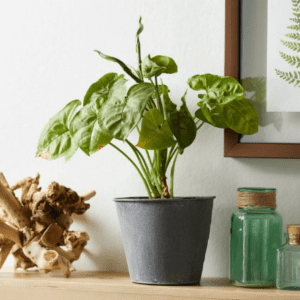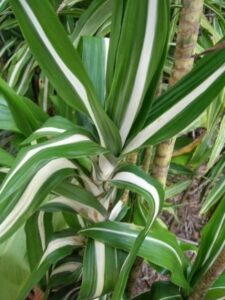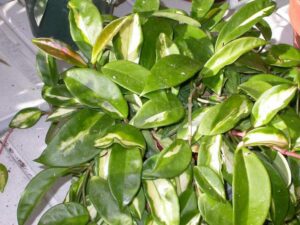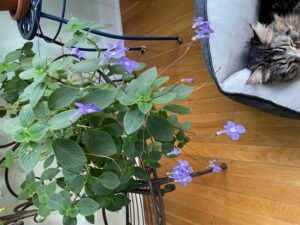These are some of the house plants our master gardeners grow and love. Read about their characteristics and care to find the right plant for your home.

Arrowhead Plant
House Plant – 6-12 inches
Arrowhead vine is named for its heart-shape foliage. Every few weeks, this tropical plant unfurls medium green leaves splashed with white, cream, silver, pink, or purple. Grow several different types of arrowhead vine and celebrate the unique coloration of this group of easy-to-grow plants. Propagate by stem cuttings.

Coleus
Annual / Shade / Various heights
Coleus comes in many different colors. For bushier, fuller plants, keep the growing tips pinched. To extend the lush color into fall, remove any stray flower spikes that emerge — they take energy away from maintaining the gorgeous foliage, and the flowers are insignificant. If growing in the garden, sow about 12 inches apart. If growing indoors for houseplants, sow at any time, placing the young plants in a well-lit window..

Corn Plant
Up to 6 feet
Slow-growing, broadleaf evergreen. Keep it in bright to moderate filtered light indoors. It thrives in lower light level situations. Direct sun can burn the foliage, but if light levels are too low, the leaves will narrow. Keep the soil moist during the growing season but cut back on the water in the winter.

Hoya
It is best grown in a standard, loamy, well-drained potting mix. It may be trained to a small trellis or framework. Site in bright light with at least 1/2 day of direct sun. Tolerant of curtain-filtered sun and bright indirect light. Good light is necessary for flower production. Pots should not be rotated or moved to another location after flower buds appear. Water plants moderately but consistently throughout the growing season, allowing the soils to become nearly dry between water applications. In winter, plants require less bright light, less watering and tolerate night temperatures to 50F degrees. Do not remove the flowering stalk after bloom because new flowers will form on the old spur.

Peperomia obtusifolia
Baby Rubber Plant
This plant is easily grown as an indoor plant in a peatty potting mix in bright indirect light. Avoid direct afternoon sun. Water moderately but consistently, allowing the soils to almost dry on top before rewatering. Reduce watering from fall to late winter. Likes high humidity in summer, so consider setting plant in a humidified room or on wet pebbles. Propagate by stem or leaf cuttings. Cut back foliage as needed to maintain plant shape.

Streptocarpus
This amazing plant graces your house with a long-lasting explosion of color, practically blooming all year if grown in good conditions.
An indoor temperature of 67-75°F is ideal. Temperatures too much above 80°F tend to cause leafburn as well as reduce the blooming power and longevity of the plant. Primroses can be grown in low light conditions, although an east or west-facing window is best. They prefer high humidity and a consistently moist, but not waterlogged soil. Protect from freezing temperatures.
